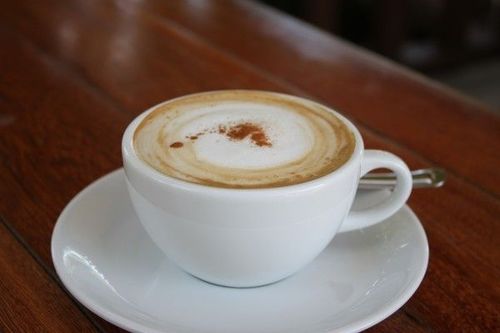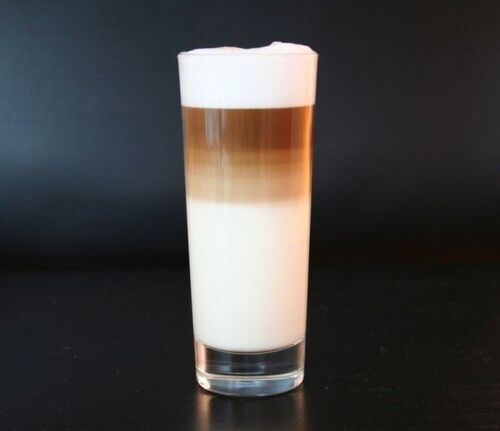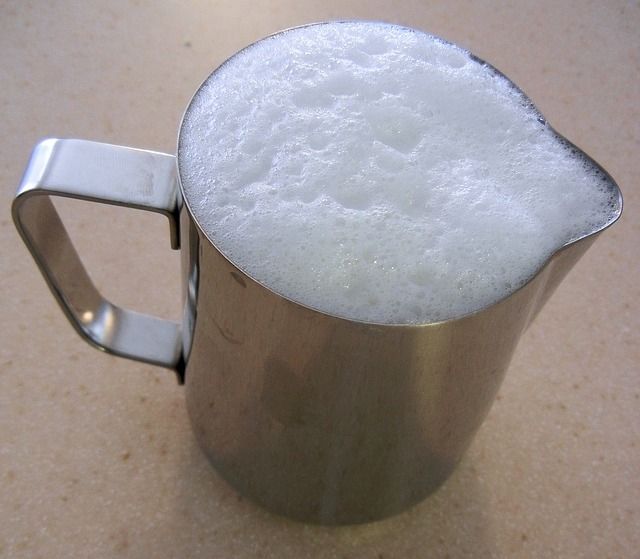In the world of baristas, and increasingly in the world of coffee lovers, there are two drinks whose preparation makes a difference and are the constant subject of comment and debate. We are referring to cappuccino and latte macchiato. However, among the general public, the differences between the two coffees are not always clear. For this reason, in this post, we will see what each of the two drinks is, what the differences between them are, and how they should be prepared correctly.
What is a cappuccino?
A cappuccino is composed of espresso, milk and steamed milk, which should also be served in this order in the cup.
There are two steps to follow: first, make the espresso -and serve it in the cup. And secondly, assemble or froth the milk to achieve that dense texture characteristic of cappuccino. The ideal proportions for making a cappuccino – although this is always controversial – are 25 ml of espresso and 125 ml of milk. They can be extended to a maximum of a quarter (25%) of espresso and the rest of the milk.
Another fundamental detail when preparing the cappuccino is the temperature: the milk at the moment of serving it should never exceed 70 degrees centigrade, nor should it reach boiling point (80º), even if we let it cool down a little later. The ideal serving temperature is slightly below this figure, between 65º and 70º. Otherwise, at a higher temperature, the air bubbles would be too large, and the foam would be inconsistent: it would disappear in a few seconds.
Furthermore, the right thing to do is to serve the cappuccino in a ceramic or porcelain cup, which is ideal for retaining heat.
The cappuccino is usually served decorated with cocoa or cinnamon powder, lightly sprinkled on the surface of the steamed milk. However, this last detail varies more according to the tastes of each person.

What is a latte macchiato?
Latte Macchiato, translated into English, is literally “Milk with coffee”. Here is the first and big difference from cappuccino: in latte macchiato, coffee is served over milk, while in cappuccino, milk is served over coffee.
To put it simply, we would say that a latte macchiato is a glass of hot milk into which a dose of the espresso is poured (or even half a dose, as the consumer prefers) and then the coffee stains the milk.
However, the latte macchiato preparation technique recommends that you froth only the top half of the milk and then pour the espresso very slowly and smoothly. In this way, the coffee will “pass-through” the first layer of steamed milk – lighter – but will remain above the milk without foaming – heavier. The result is the characteristic and beautiful tricolour flag that we can see in the picture below.
Latte macchiato is usually served in a long, transparent glass to appreciate better the contrast of colours and the breakage of the coffee over the milk.

Differences between a cappuccino and a latte macchiato
The ingredients of both drinks are mostly the same: espresso and milk that is vaporized. However, the differences come when it comes to using and serving them.
- In the cappuccino, the espresso is served first, and on top of it, the steamed milk. In the latte macchiato, it is done in just the opposite order.
- The cappuccino should be served in a ceramic cup because it retains heat better. The latte macchiato should be served in tall, transparent glass so that the various layers can be appreciated. In our shop to buy coffee glasses, you have some exciting options in this respect.
- Generally, a latte macchiato has a much smaller amount of coffee than a cappuccino (although the consumer always has the last word on this).

How to prepare cappuccino and latte macchiato
Although there are various techniques for preparing cappuccinos and lattes by hand and without machines, it is appropriate to have a manual espresso machine to control all the parameters, both of the preparation of the espresso and the vaporization of the milk.
You can prepare them more quickly, but with less manual control of the process, with an automatic espresso machine. These machines usually have a One-Touch function that allows you to enjoy a cappuccino or latte macchiato in the exact proportions at the touch of a button. Place your cup or glass under the spout, press the button and wait.
The coffee maker takes care of everything. Grind the coffee, extract the espresso, assemble the milk, serve everything in the right order and with the right pressure, a great alternative to enjoy professional preparations in your own home without having to take a barista course or have extensive technical knowledge about this art.

Whichever processing method you choose, you will need specific instruments to obtain a correct result in your preparation. For example, to froth the milk in the best conditions and not alter its properties, use a stainless steel jug. It is also essential to use whole milk -which has a higher amount of fat- to get the foam to look as we want it to.
And always, always, the milk must be cold before foaming. What for? Well, to have more time to work it and to get more foam before it reaches the top of the 65º we mentioned before. The whole milk after steaming must be bright, and no air bubbles should be visible to the naked eye. The smaller they are, the more consistent the cream will be.
Finally, we will try to illustrate our analytical report with some videos that will help you visualize and put into practice all the concepts learned.
In this first video, a professional barista shows us how to prepare a cappuccino with an espresso machine, also how to foaming and serve the milk.
Finally, the video demonstrates how to prepare a latte macchiato. Pay special attention to the detail of serving the espresso with the help of a teaspoon at the end of the process. It is done so that the coffee penetrates just as far as we want it to and thus obtains the indispensable three layers of the latte macchiato:
